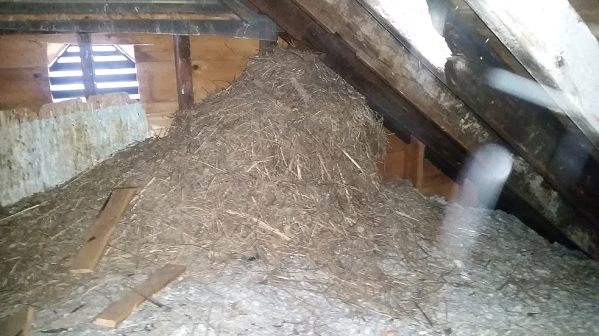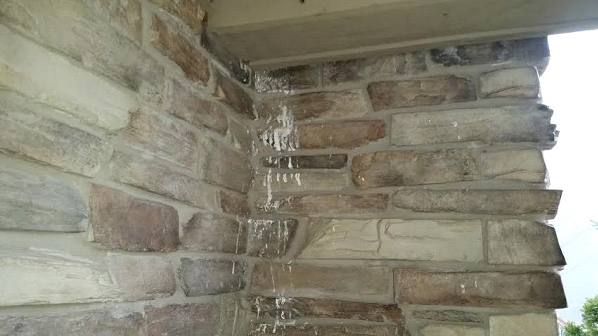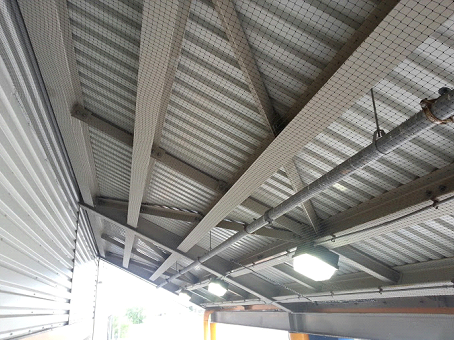The most common and the worst nuisance bird species in North America is the European Starling. They are considered to be an invasive species. European Starlings are normally described as loud, obnoxious, destructive birds, who steal grain, ravage crops and force out native bird species. Many of the problems created by starlings come from their large population. Flocks can number in the thousands, and when a flock of this size settles on a field the damage they can do is considerable. Starlings are particularly terrible in their attacks on crops such as grapes, olives, cherries and grains. In new grain fields starlings pull up the young plants and eat the seeds.
How did starling populations become so large?
European Starlings were first introduced to the United States in 1890. Rumour has it that sixty to one hundred starlings were released in Central Park in hopes that all of the birds mentioned in Shakespeare’s works would become established in the New World. In the case of the starling, the wish became reality. In the intervening hundred years the starling population has grown to an estimated 150-200 million birds.
Starlings thrived because they are able to exploit a large variety of habitats, nest sites and food sources. They will eat almost anything, including a diverse variety of invertebrates, fruits, and seeds.
Problems Starlings Cause
Starlings create problems for livestock and poultry facilities, causing hundreds of millions of dollars in damage to agricultural operations yearly. Starlings gather at feed troughs to eat, contaminating food and water sources in the process. Starlings are also known to enter buildings to roost and build nests, creating sanitation problems.
European Starlings can carry diseases that are transmissible to livestock and to people, including TGE (transmissible gastroenteritis – a disease of swine), blastomycosis, and salmonella.

Starling nests in buildings are potential fire hazards. They also block airflow from the vent above, which is important for a well ventilated attic. Starling nests may also have mites.
Sanitation issues involving starlings are another problem. In cities, large amounts of droppings can make streets dangerously slippery and can be corrosive to cars, buildings, and statues. The sheer amount of droppings together with their chemical action can damage and kill trees and any vegetation underneath.

Starling droppings have stained the side of this building. If more droppings accumulate they will drip onto the vegetation below and kill the vegetation.
Starlings travel in flocks of thousands and pose an incredible hazard to air travel. They often forage near airports and have been implicated in air disasters, particularly when planes have collided with entire flocks of birds.
It is not uncommon for a flock of 4000 Starlings to cause major loss of revenue in a large vineyard in a week’s time. Starlings are also capable of destroying blueberries, cherries, other types of pitted fruit, and even apples.
European Starlings also have detrimental effects on native ecosystems, particularly through their tendency to out compete native bird species for food and nest sites. European Starlings are cavity nesters and are known to compete with woodpeckers, Great Crested Flycatchers, Tree Swallows, Eastern Bluebirds and Purple Martins for nests, possibly causing these populations to decline. They also carry diseases, ticks and mites that are spread to native bird species and even humans.
How to protect your home or business from European Starlings
A build-up of bird numbers in urban environments is normally a result of the presence of a readily accessible food supply and/or the availability of attractive habitats where they can roost or breed. Effective long-term management is normally dependent on the ability to eliminate or reduce these aspects.
Birds can be prevented from entering or roosting on buildings by either installing netting over vulnerable areas or fixing wire, plastic or other purpose-designed devices to deter birds from landing on ledges, window sills or other structures. It is also helpful to seal up all cracks and crevices on structures with sealant. Vent openings for dryer, stove and bathroom fans are a common nesting site for starlings during spring and summer.

Bird netting used to deter Starlings
The fitting of proofing and deterrent measures can be complicated, and should be done by professionals.
As is the case with most wildlife issues, prevention is a much easier solution as opposed to tackling the problem after a full blown infestation. Using preventive measures to make sure starlings do not make their nest on your home or business is much easier and more cost effective than having to deal with structural damage and the mess from starling droppings or even legal liability if someone slips on bird droppings outside your business.
Protect your home or business against invasive starlings today by calling Skedaddle Humane Wildlife Control 1.888.592.0387.
Proudly serving: Milton, Oakville, Burlington, Hamilton, Niagara Falls, Kitchener, Cambridge, Sudbury, Ottawa, Montreal, Halifax, Waterloo, Guelph, St. Catharines, Mississauga, Brampton



